Your Shopping Bag
Your bag is currently empty.
Add a Gift Note
Adding a personal touch to your gift is easy! At checkout, enter the recipient's info in the shipping address section and we’ll include this note in the order.
0% interest for up to 24 months available on select brands. Learn more here.
0% interest for up to 24 months available on select brands. Learn more here.
0% interest for up to 24 months available on select brands. Learn more here.
0% interest for up to 24 months available on select brands. Learn more here.
0% interest for up to 24 months available on select brands. Learn more here.
0% interest for up to 24 months available on select brands. Learn more here.
0% interest for up to 24 months available on select brands. Learn more here.
0% interest for up to 24 months available on select brands. Learn more here.
0% interest for up to 24 months available on select brands. Learn more here.
0% interest for up to 24 months available on select brands. Learn more here.
0% interest for up to 24 months available on select brands. Learn more here.
0% interest for up to 24 months available on select brands. Learn more here.
0% interest for up to 24 months available on select brands. Learn more here.
0% interest for up to 24 months available on select brands. Learn more here.
0% interest for up to 24 months available on select brands. Learn more here.
0% interest for up to 24 months available on select brands. Learn more here.
Adding a personal touch to your gift is easy! At checkout, enter the recipient's info in the shipping address section and we’ll include this note in the order.
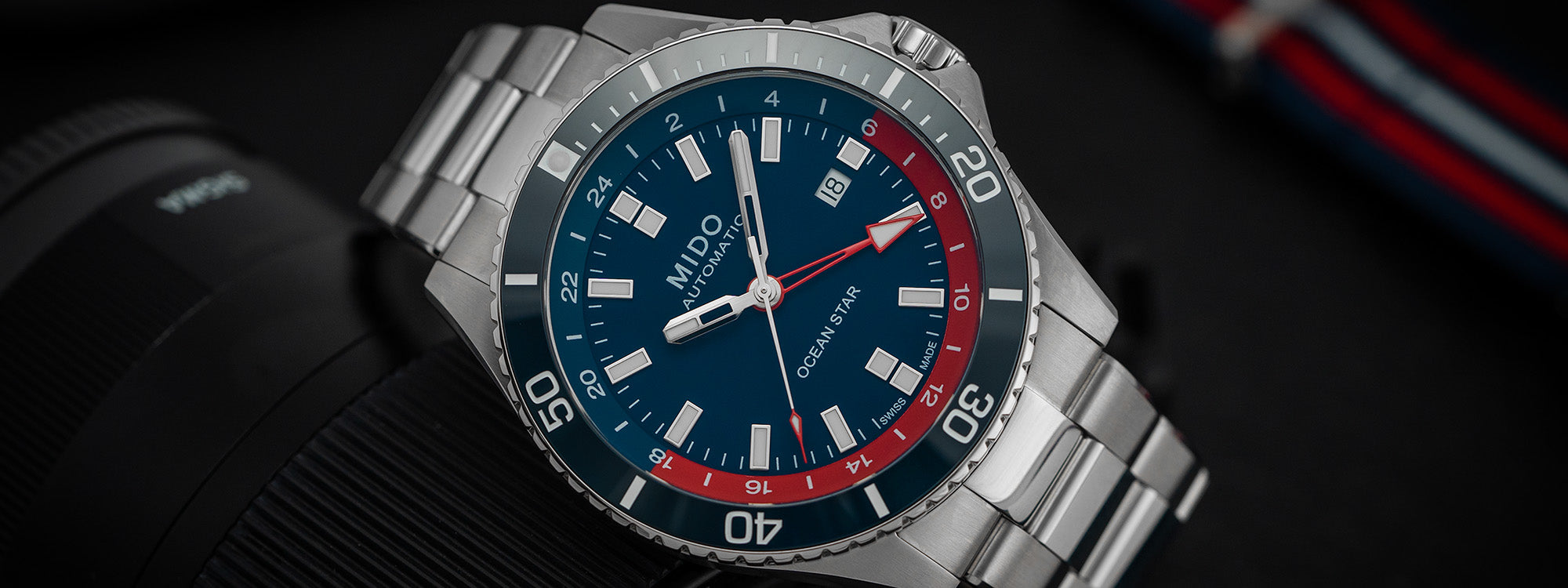
Mido is not one of the more widely familiar watchmakers in North America — though its watches have enjoyed a longstanding popularity south of the border, in Latin America — despite the fact that the brand, now owned by Swatch Group, has been around for a long time. It was founded on November 11, 1918, the same date of the armistice that ended World War I, by watchmaker Georges G. Schaeren (below) in the Swiss town of Biel-Bienne. Its name comes from the Spanish phrase Yo Mido, meaning “I Measure,” which may or may not indicate that Schaeren had always intended his products to appeal to a large Spanish-speaking audience.

What is indisputable is that the Mido brand contributed some significant innovations to watchmaking in the 20th Century, few of which are often acknowledged. The company came up with one of the first solutions to waterproofing watch cases in 1930, developing a sealing system (below) that installed a watertight gasket made of cork between the crown and the case; Mido later named this invention “Aquadura.” The Mido Multifort, still produced today, debuted in 1934 and became the first antimagnetic watch with automatic winding. In 1945, Mido unveiled the Multi-CenterChrono, the first chronograph watch with a central display for the elapsed time, and in 1954 developed the Powerwind automatic winding system that increased efficiency by reducing the number of parts in the mechanism. Of all these milestones, it was the Aquadura waterproofing technology that proved most instrumental in defining the brand’s core sport-oriented model, the Ocean Star dive watch.
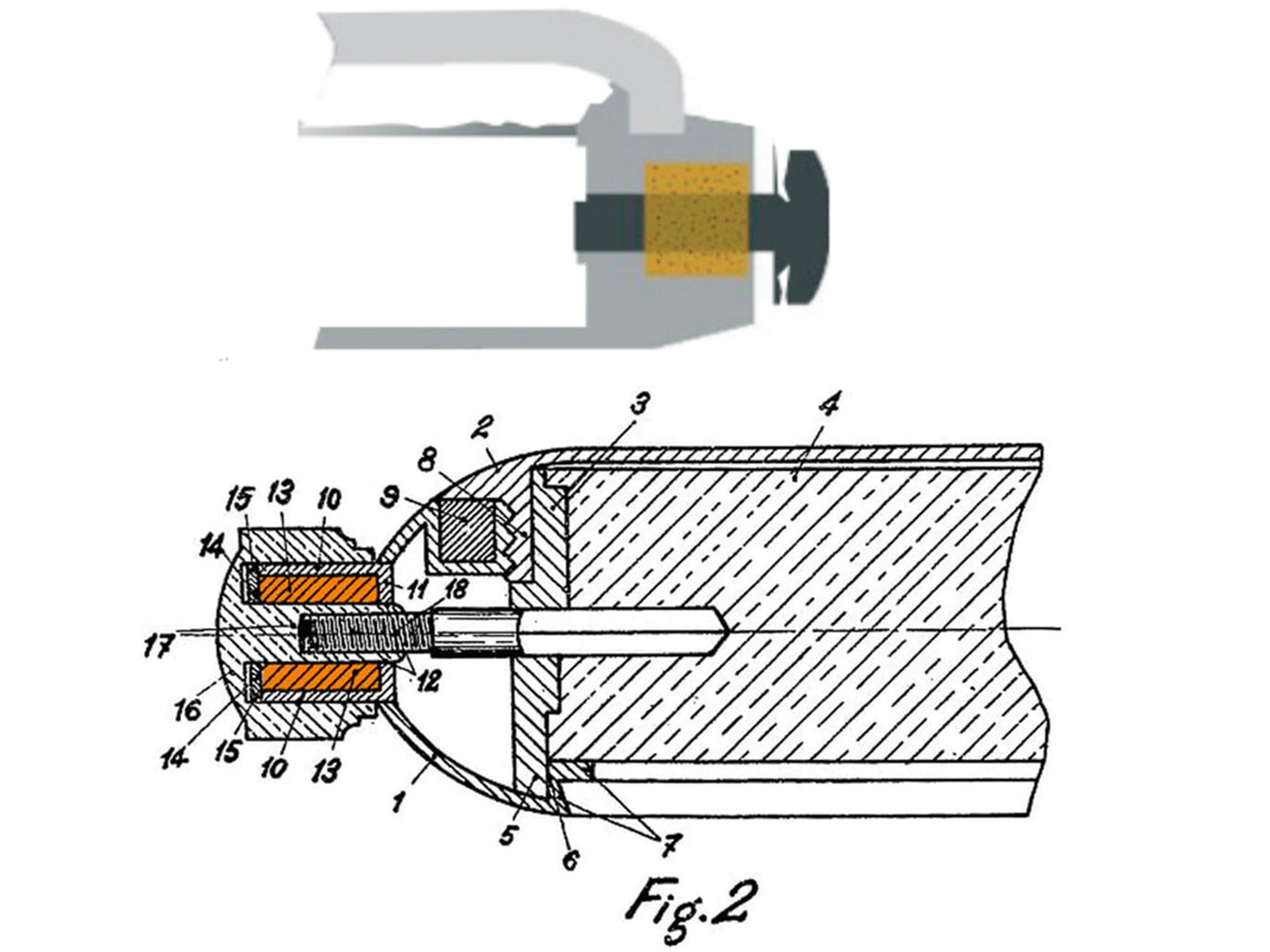
The Mido Ocean Star, technically the Ocean Star Commander, joined the brand’s lineup in 1959, a relative latecomer to the burgeoning dive watch genre that became firmly established in that decade, pioneered by iconic models like the Rolex Submariner and Blancpain Fifty Fathoms. Apparently, the idea for such a watch had been percolating within the company for some time: Mido trademarked the name “Oceanstar” in 1944 and registered the model’s emblematic starfish emblem (below) even earlier, in 1942.
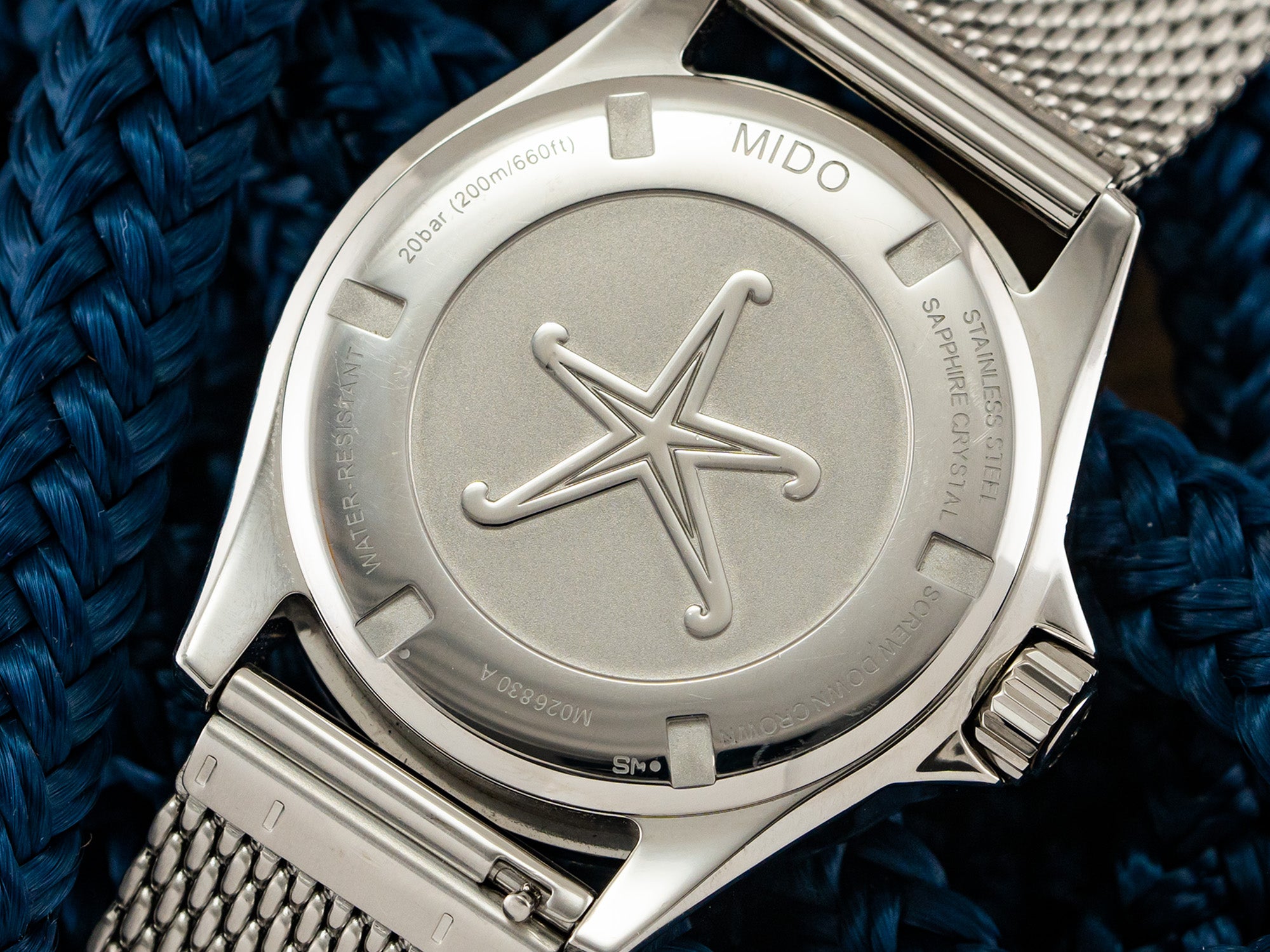
What made the Ocean Star noteworthy was its single-shell case, combined with the Aquadura crown-sealant system, which allowed for front-loading of the movement and prevented water from entering through any seams between the front and back of the case. While many watch aficionados may be unaware of this milestone in this evolution of waterproof watches, even fewer are likely aware that another long-serving stalwart in Mido’s collection, the Commander, is the direct descendant of this version of the Ocean Star Commander and the only model in the lineup that still uses this single-piece “monocoque” case design.
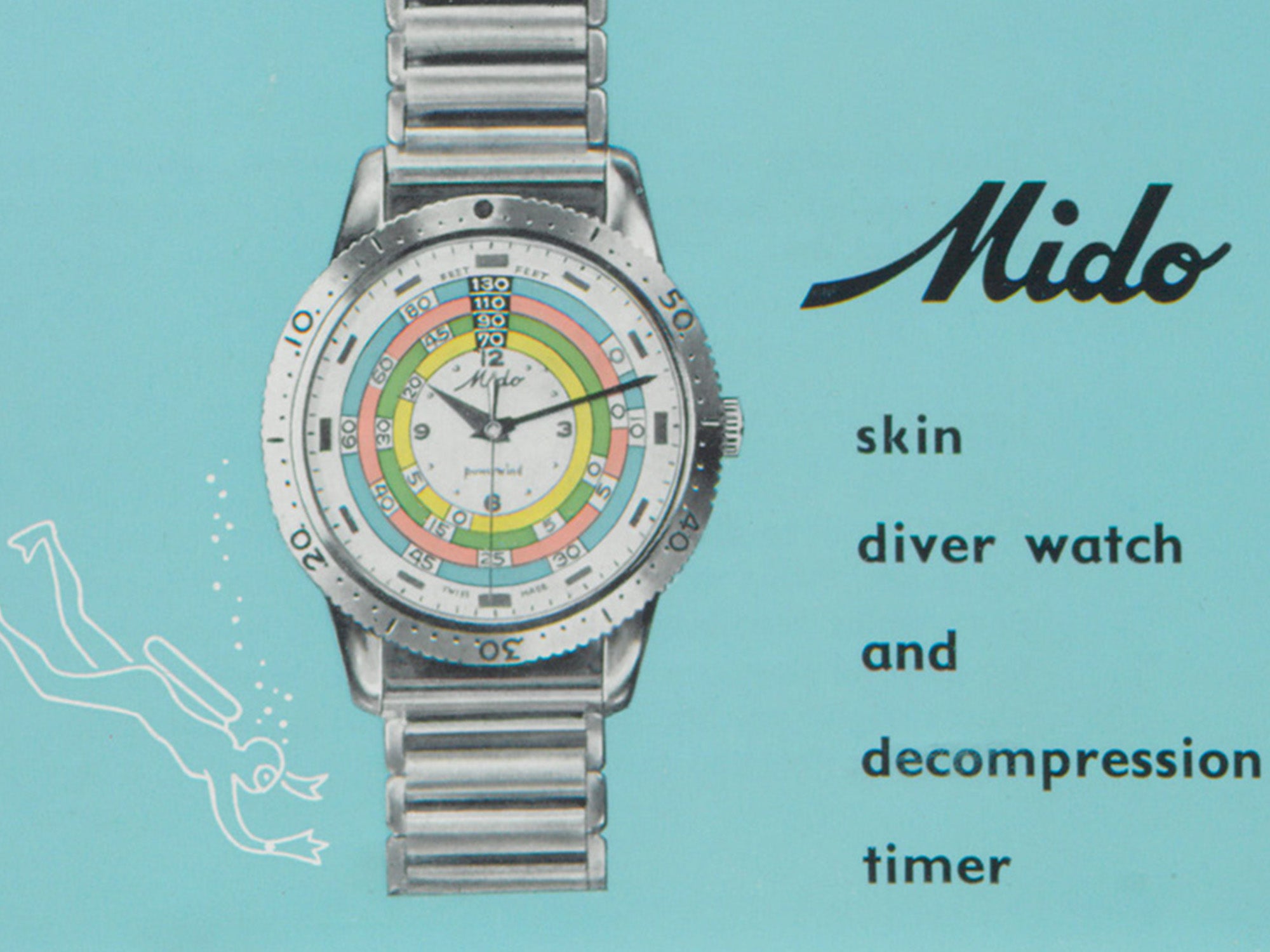
The Mido Ocean Star became a pillar of the company’s collection shortly after its debut. A “rainbow dial” version of the Ocean Star Commander with a diver’s decompression scale — vintage ad above, the inspiration for the modern Worldtimer model, more on which below — came along in 1961 and a ladies’ model followed in 1962. An Ocean Star was chosen as the official timepiece of a 1965 Antarctic expedition sponsored by Sir Edmund Hillary and led by mountaineer and British Royal Marines veteran Warwick Deacock. Mido Ocean Star watches remained in production through the Quartz Crisis era and beyond, but it is only in recent years that Mido has significantly grown and enhanced the Ocean Star collection — equipping them with the groundbreaking Powermatic 80 caliber, upgrading their construction with modern materials like ceramic and titanium, even adding useful complications like chronograph, GMT, and world-time functions — all while maintaining the impressive price-to-value ratio that has defined Mido throughout its history. Below, we explore the most important pillars of the Mido Ocean Star collection.
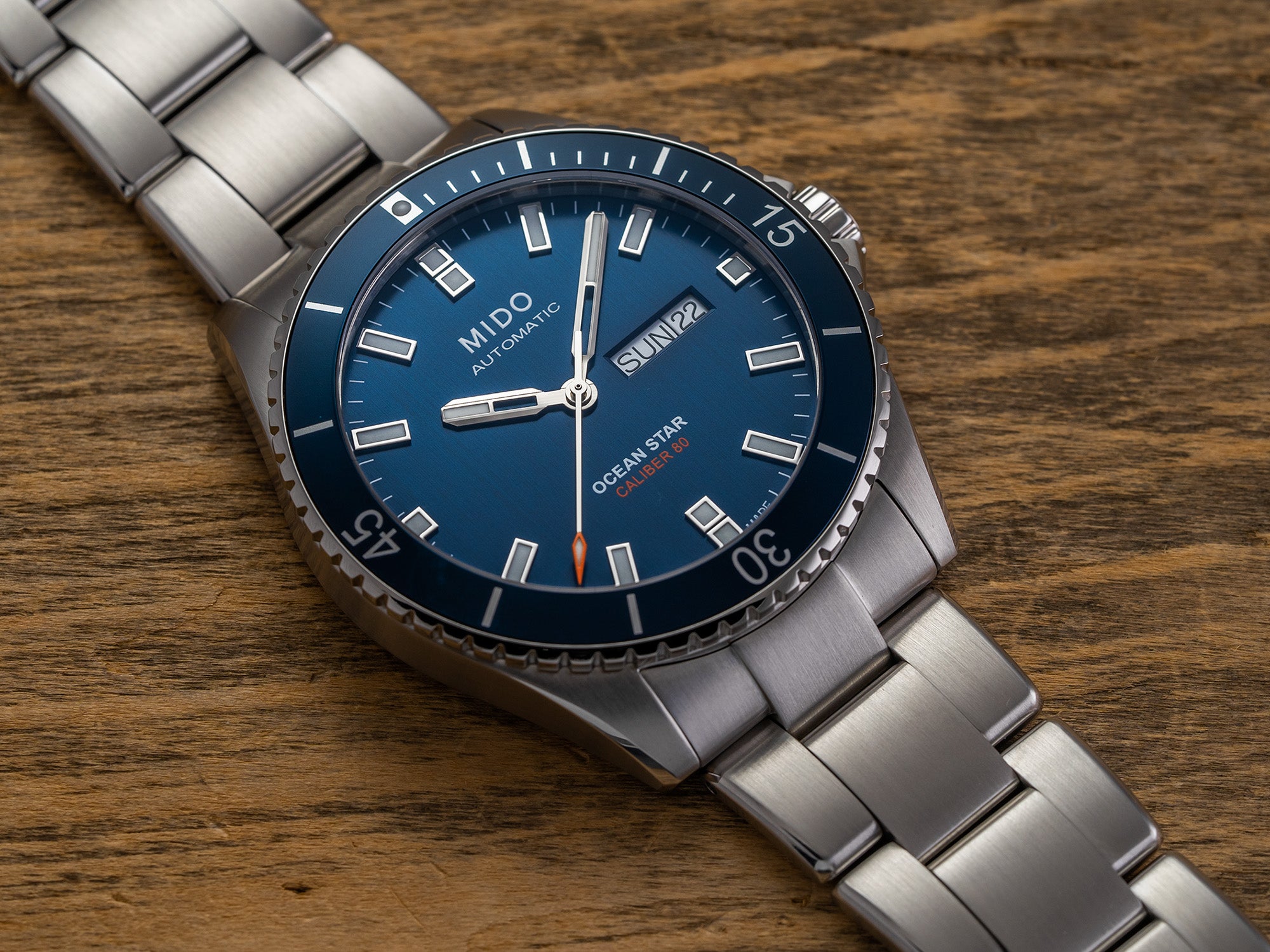 Price: $930 - $1,100, Case Size: 42.5mm, Thickness: 11.8mm, Lug Width: 22mm, Crystal: Sapphire, Water Resistance: 200 meters, Movement: Automatic Mido Caliber 80
Price: $930 - $1,100, Case Size: 42.5mm, Thickness: 11.8mm, Lug Width: 22mm, Crystal: Sapphire, Water Resistance: 200 meters, Movement: Automatic Mido Caliber 80
The “entry-level” model in the current Ocean Star family is the Ocean Star 200 Automatic, formerly called the “Captain.” As per the numeral in their name, these models (like all of the models listed here with the exception of the Ocean Star 600 Chronometer) resist water pressure down to 200 meters with the aid of a screwed crown and caseback. The stainless steel cases measure 42.5mm in diameter and 11.8mm thick and feature a unidirectional dive-scale bezel with an aluminum insert. The dial uses skeletonized hands and rectangular hour markers (doubled at 12 and 6 o’clock for extra legibility), all coated with Super-LumiNova, and hosts a day/date window at 3 o’clock. The movement inside is the now-familiar Powermatic 80, based on the ETA CO7.611 and offering an increased power reserve of 80 hours as per its name; it beats at 21,600 vph behind a solid caseback relief-engraved with a starfish emblem.

Price: $990 - $1,200, Case Size: 40.5mm, Thickness: 13.4mm, Lug Width: 21mm, Crystal: Sapphire, Water Resistance: 200 meters, Movement: Automatic Mido Caliber 80
The Tribute models joined the line in 2019, which Mido commemorated as the 75th anniversary of the Ocean Star line (technically, it was the anniversary of the trademark). They can be distinguished from the standard Ocean Star Automatics by their more retro elements paying tribute to the models of the 1960s. The dial has an inverted triangle rather than a doubled rectangular index at 12 o’clock and the paddle-style hands are not openworked, though they (and the indexes) are luminous-coated. The case dimensions are smaller — 40.5mm rather than 42.5 — and several of the dials are finished in an appealing gradient effect. Tribute models, also outfitted with a Caliber 80 movement that powers their three-handed time display and day-date indicator, are mounted on either a vintage-look steel mesh bracelet or a synthetic rubber strap.
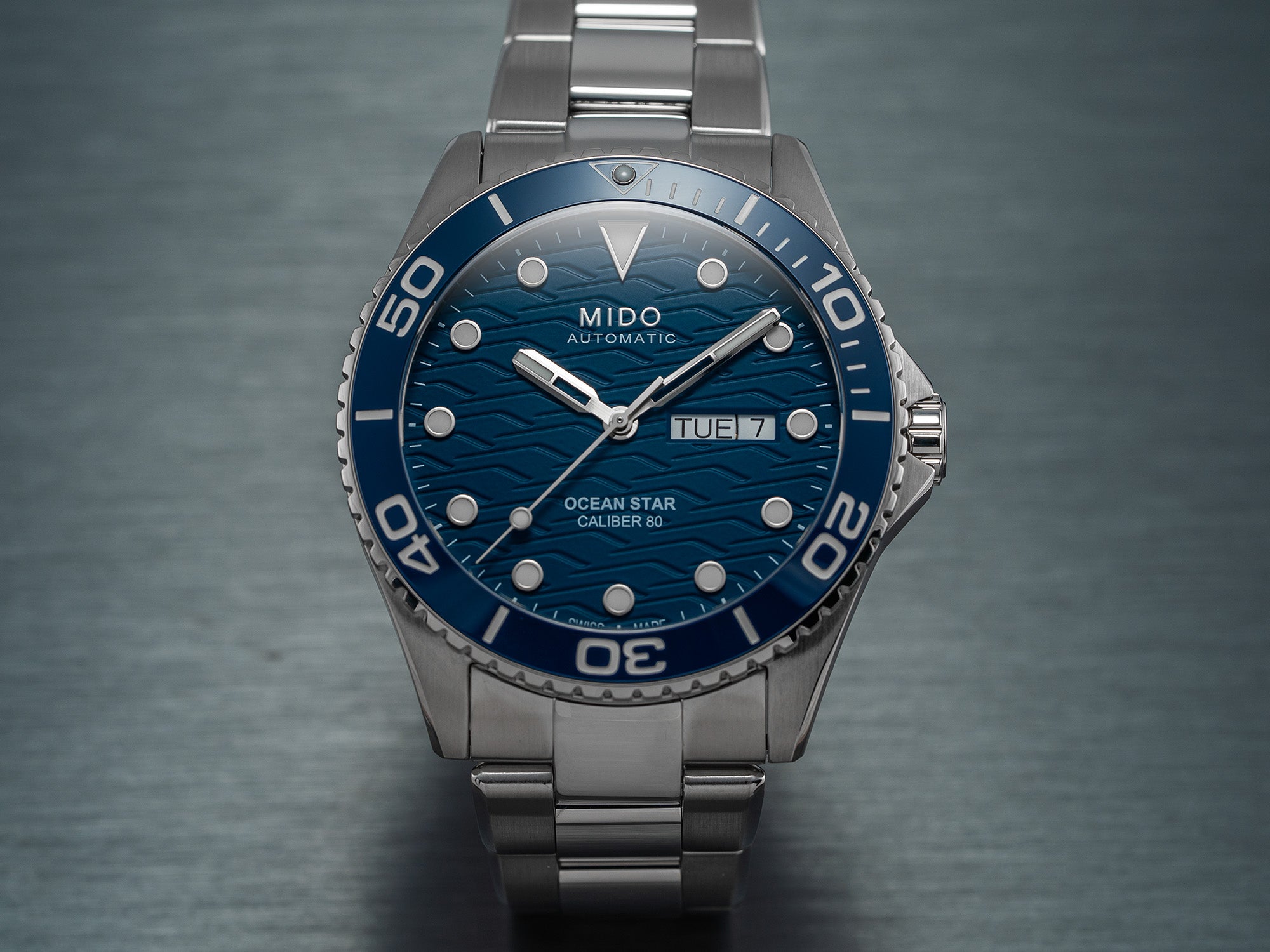
Price: $1,140 - $1,250, Case Size: 42.5mm, Thickness: 12.3mm, Lug Width: 22mm, Crystal: Sapphire, Water Resistance: 200 meters, Movement: Automatic Mido Caliber 80
The “C” at the end of these models’ name stands for “ceramic,” the material used for their engraved divers’ bezels that elevates them to a slightly higher level of sporty luxury. The font on the ceramic diving bezels is wider and bolder than on the standard Automatic and Tribute models, and the dials, which are color-matched to the bezels, feature an attractive rippled texture that calls to mind ocean waves. Also noteworthy on the dials are the circular hour markers, paired with the inverted triangle at 12 o’clock and interrupted only by the day-date window at 3 o’clock, all of which are soaked with Super-LumiNova, along with the partially openworked hands. Most 200C models come on a sturdy three-link steel bracelet; the blue dial/blue bezel version above also offers the option of a blue rubber strap. At the highest end of this sub-family is the 200C Titanium, which uses the lightweight metal for both its case and bracelet.

Price: $1,250 - $1,470, Case Size: 44mm, Thickness: 13.4mm, Lug Width: 22mm, Crystal: Sapphire, Water Resistance: 200 meters, Movement: Automatic Mido Caliber 80
The Ocean Star GMT, launched in 2020, is the family’s first dual-time-zone watch, with a sturdy and rather large stainless steel case (44mm) and the same ceramic divers’ bezel as the Ocean Star 200C Automatics. An intriguing outlier from both typical dive watches and typical GMT watches, the timepiece deftly combines two functional scales. The rotating bezel hosts the traditional 60-minute dive scale with the first 20-minute sector highlighted, while the 24-hour scale that you might expect to find on the bezel is instead printed on the dial’s flange. A long, arrow-tipped hand points to the scale, enabling the wearer to read the time in additional time zones while the two main hands display the local time on rectangular indexes; the date (sans day) appears at 3 o’clock. The Powermatic 80 caliber inside the 44mm steel case has been equipped with an added module for the GMT functions.
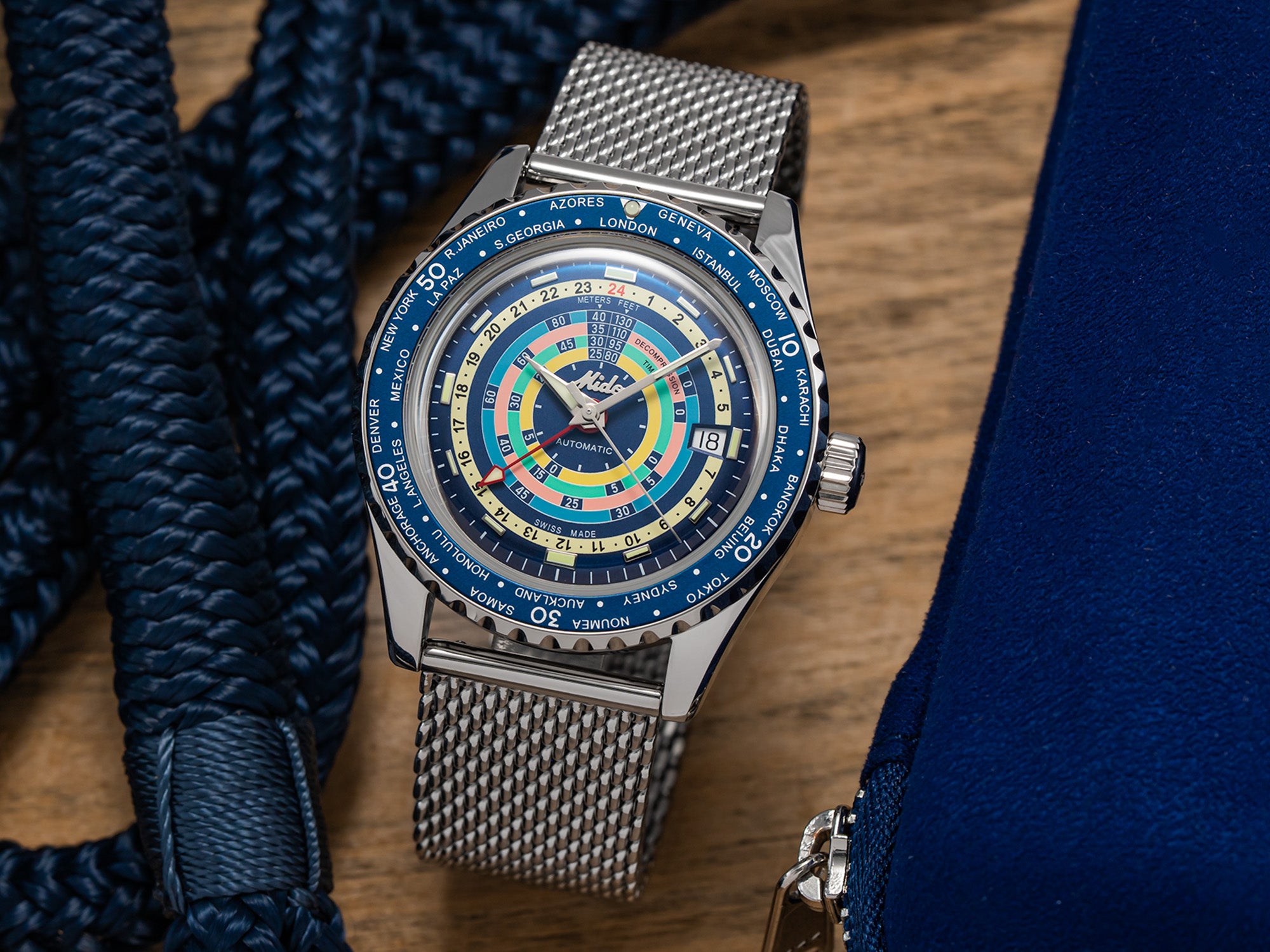
Price: $1,310, Case Size: 40.5mm, Thickness: 13.4mm, Lug Width: 21mm, Crystal: Sapphire, Water Resistance: 200 meters, Movement: Automatic Mido Caliber 80
One of Mido’s most unusual and memorable watches from the Swinging Sixties is reborn with a contemporary twist in the colorful-yet-utilitarian Ocean Star Decompression World Timer. The watch’s funky, colorful, concentric-rings dial and notched rotating bezel take their cues from the 1961 “Rainbow” diver; like that fondly remembered model, the modern version is compact (40.5mm) yet multi-functional: the aluminum bezel (in either blue or black) combines elements of a 60-minute dive scale with the names of 24 world cities, each representing a different time zone. The city ring can be aligned with the central GMT hand and the outer 24-hour ring on the dial to indicate the time in any part of the world. The inner multicolored sectors, as per the original watch’s purpose, serve as a decompression scale for a diver to time his ascent to the surface. The Decompression Worldtimer serves amply as both a travel watch and divers’ watch, maintaining the line’s hallmark 200-meter water resistance. Inside, behind a starfish-engraved caseback, is yet another version of the Caliber 80, this one based on the GMT-equipped ETA C07.661.
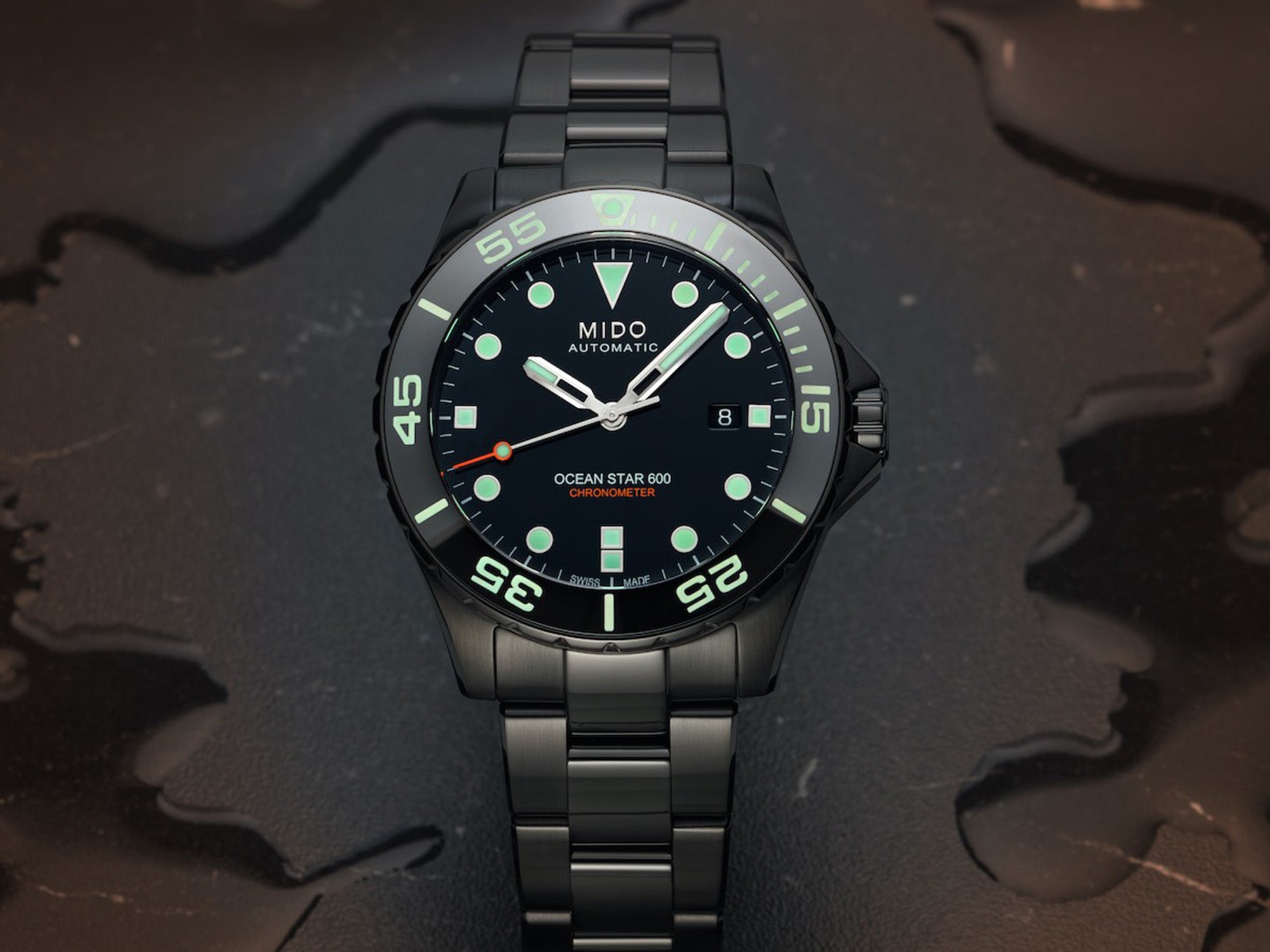
Price: $1,780 - $1,930, Case Size: 43.5mm, Thickness: 14.6mm, Lug Width: 22mm, Crystal: Sapphire, Water Resistance: 200 meters, Movement: Automatic COSC-certified Mido Caliber 80 Si
Another little known factoid about Mido is that the company is regularly ranked in the Top 10 among Swiss watchmakers who produce the most COSC-certified chronometer watches annually. One of those chronometer calibers ticks inside the Ocean Star 600 Chronometer models, specifically a version of the Caliber 80 that has been further upgraded with an antimagnetic silicon balance spring that delivers increased accuracy. The elite movement is only half the story, however, as the robust, 43.5mm steel case of the Ocean Star 600 Chronometer is built to withstand water pressure to a crushing depth of 600 meters and adds to its deep-diving cred with a built-in helium release valve. The models (all in steel on bracelets, one with a black DLC coating) also feature ceramic bezel inserts with luminous markings, a date display at 3 o’clock, and a distinct arrangement of hour markers, with the triangle at 12 o’clock, double-index at 6 o’clock, and big round dots at the other hour positions. And it says a lot about Mido that its most “serious,” over-engineered dive watch still comes in under the $2,000 price threshold.
Official Authorized Dealer of over 40+ leading luxury brands.
Dedicated customer service staff ready to resolve any purchase or product issues.
Swift delivery directly from our fulfillment center, no product sourcing or un-stocked consignment.

We work with leading luxury brands to provide the best selection for discerning collectors.
We just redirected you to the best site experience based on your location. If you still want to go to the previous country, you can select it in the international menu.
Start the Conversation